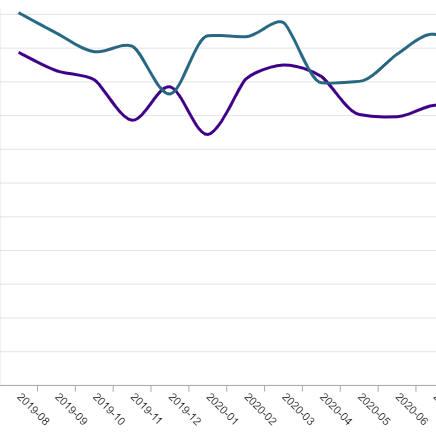Hello all,
I try to find out, how to best measure fully automated vendor invoice management documents (can also be any other document head). I found a way to measure measure documents, that contain at least one manuel user interaction:
COUNT(DISTINCT
CASE WHEN
CASE WHEN
"_CEL_VIM_ACTIVITIES"."USER_TYPE" IN ( <%=manual_user_type%> )
AND "_CEL_VIM_ACTIVITIES".ACTIVITY_<%=language%> NOT IN (<%=whitelist%>)
THEN 1 ELSE 0 END
= 1
AND MATCH_ACTIVITIES("_CEL_VIM_ACTIVITIES"."ACTIVITY_DE", NODE['Gleiche Rechnung aus (VIM)']) = 1
THEN
"/OPT/VIM_1HEAD"."DOCID"
ELSE '' END
)
This works as single kpi and on a line chart. When I try to apply a somewhat similar logic for automated documents, I get the expected results as single KPI, but in the timeline I get like twice the documents.
COUNT(DISTINCT
CASE WHEN
MATCH_ACTIVITIES("_CEL_VIM_ACTIVITIES"."ACTIVITY_DE", NODE['Gleiche Rechnung aus (VIM)']) = 1
THEN
"/OPT/VIM_1HEAD"."DOCID"
ELSE '' END
)
-
COUNT(DISTINCT
CASE WHEN
CASE WHEN
"_CEL_VIM_ACTIVITIES"."USER_TYPE" IN ( <%=manual_user_type%> )
AND "_CEL_VIM_ACTIVITIES".ACTIVITY_<%=language%> NOT IN (<%=whitelist%>)
THEN 1 ELSE 0 END
= 1
AND MATCH_ACTIVITIES("_CEL_VIM_ACTIVITIES"."ACTIVITY_DE", NODE['Gleiche Rechnung aus (VIM)']) = 1
THEN
"/OPT/VIM_1HEAD"."DOCID"
ELSE '' END
)
According to reality, one line should be at around 0 level.

Do you understand my issue and have an idea on what I do wrong here? If you want to help me with some formula, which I really would appreciate, please be aware that we use Celonis On-Premise and the latest stuff might not be implemented yet.
Best Regards
Patrick
 Do you understand my issue and have an idea on what I do wrong here? If you want to help me with some formula, which I really would appreciate, please be aware that we use Celonis On-Premise and the latest stuff might not be implemented yet.
Best Regards
Patrick
Do you understand my issue and have an idea on what I do wrong here? If you want to help me with some formula, which I really would appreciate, please be aware that we use Celonis On-Premise and the latest stuff might not be implemented yet.
Best Regards
Patrick


